Qinglin Tan
Random Ensemble Reinforcement Learning for Traffic Signal Control
Mar 10, 2022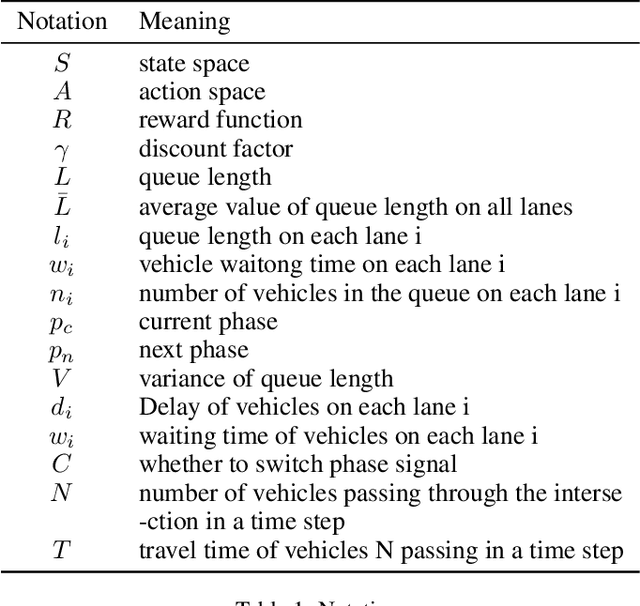
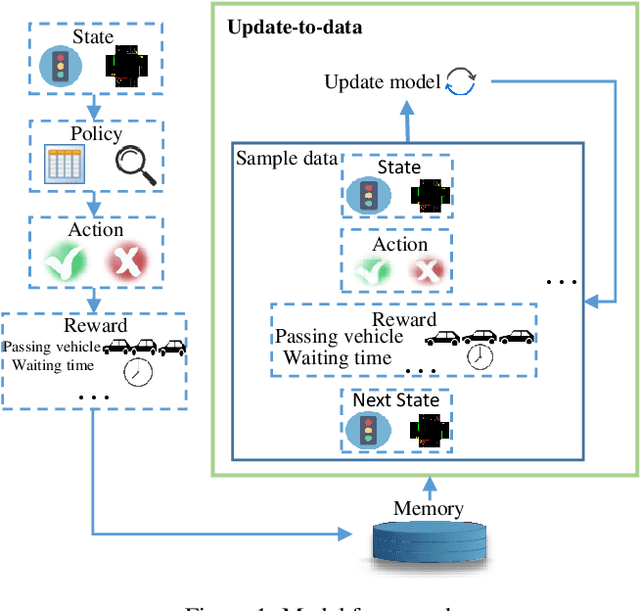
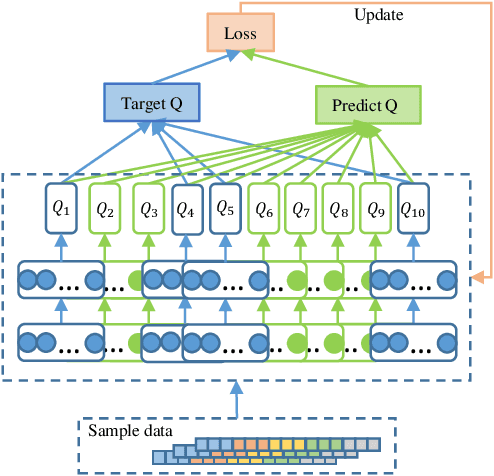
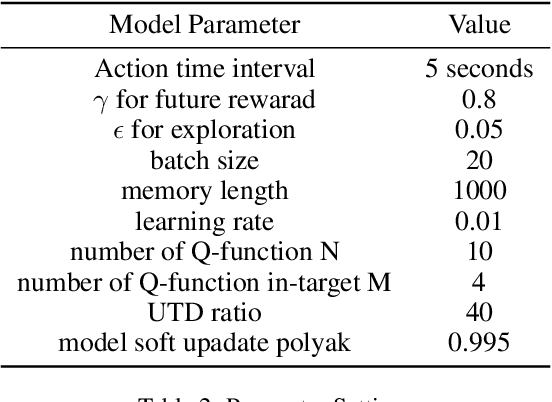
Abstract:Traffic signal control is a significant part of the construction of intelligent transportation. An efficient traffic signal control strategy can reduce traffic congestion, improve urban road traffic efficiency and facilitate people's lives. Existing reinforcement learning approaches for traffic signal control mainly focus on learning through a separate neural network. Such an independent neural network may fall into the local optimum of the training results. Worse more, the collected data can only be sampled once, so the data utilization rate is low. Therefore, we propose the Random Ensemble Double DQN Light (RELight) model. It can dynamically learn traffic signal control strategies through reinforcement learning and combine random ensemble learning to avoid falling into the local optimum to reach the optimal strategy. Moreover, we introduce the Update-To-Data (UTD) ratio to control the number of data reuses to improve the problem of low data utilization. In addition, we have conducted sufficient experiments on synthetic data and real-world data to prove that our proposed method can achieve better traffic signal control effects than the existing optimal methods.
Multi-View Dynamic Heterogeneous Information Network Embedding
Nov 12, 2020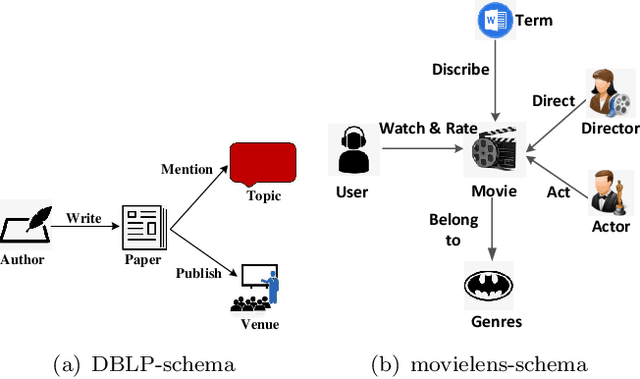

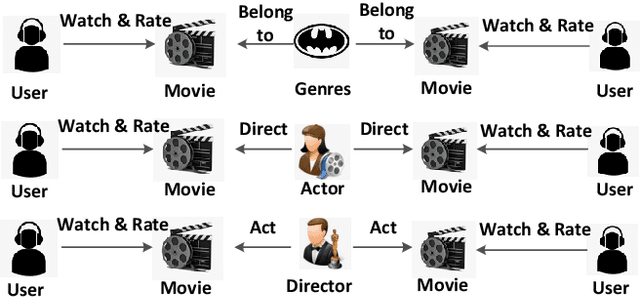
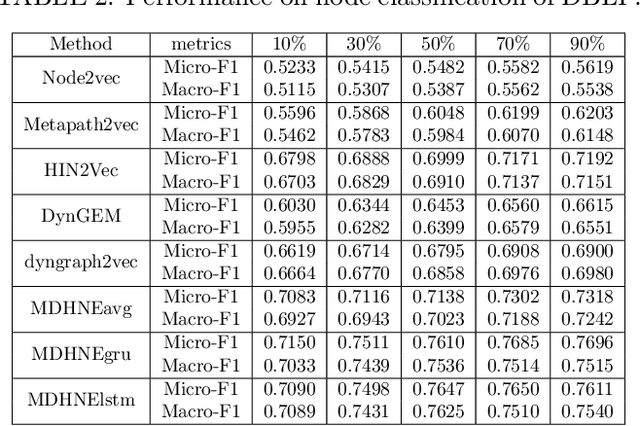
Abstract:Most existing Heterogeneous Information Network (HIN) embedding methods focus on static environments while neglecting the evolving characteristic of realworld networks. Although several dynamic embedding methods have been proposed, they are merely designed for homogeneous networks and cannot be directly applied in heterogeneous environment. To tackle above challenges, we propose a novel framework for incorporating temporal information into HIN embedding, denoted as Multi-View Dynamic HIN Embedding (MDHNE), which can efficiently preserve evolution patterns of implicit relationships from different views in updating node representations over time. We first transform HIN to a series of homogeneous networks corresponding to different views. Then our proposed MDHNE applies Recurrent Neural Network (RNN) to incorporate evolving pattern of complex network structure and semantic relationships between nodes into latent embedding spaces, and thus the node representations from multiple views can be learned and updated when HIN evolves over time. Moreover, we come up with an attention based fusion mechanism, which can automatically infer weights of latent representations corresponding to different views by minimizing the objective function specific for different mining tasks. Extensive experiments clearly demonstrate that our MDHNE model outperforms state-of-the-art baselines on three real-world dynamic datasets for different network mining tasks.
 Add to Chrome
Add to Chrome Add to Firefox
Add to Firefox Add to Edge
Add to Edge